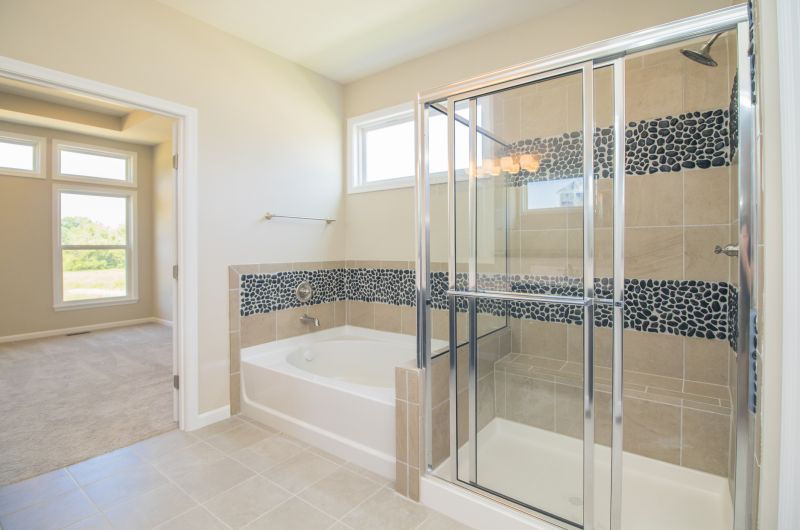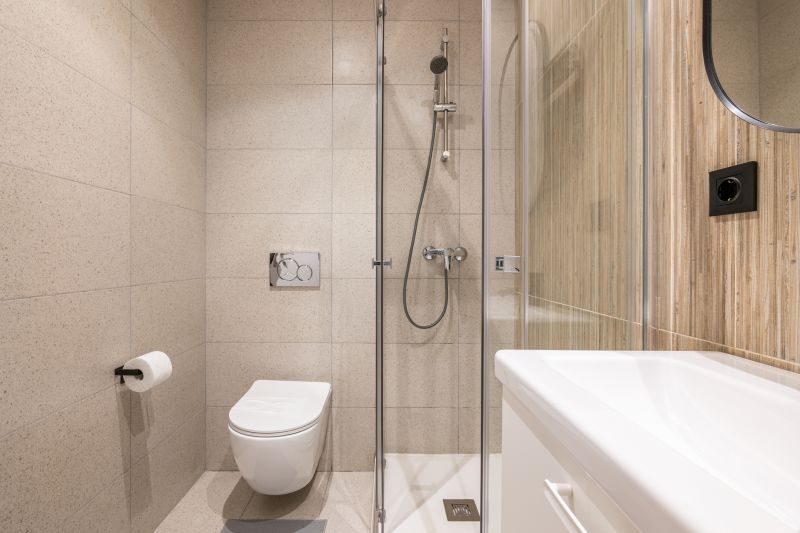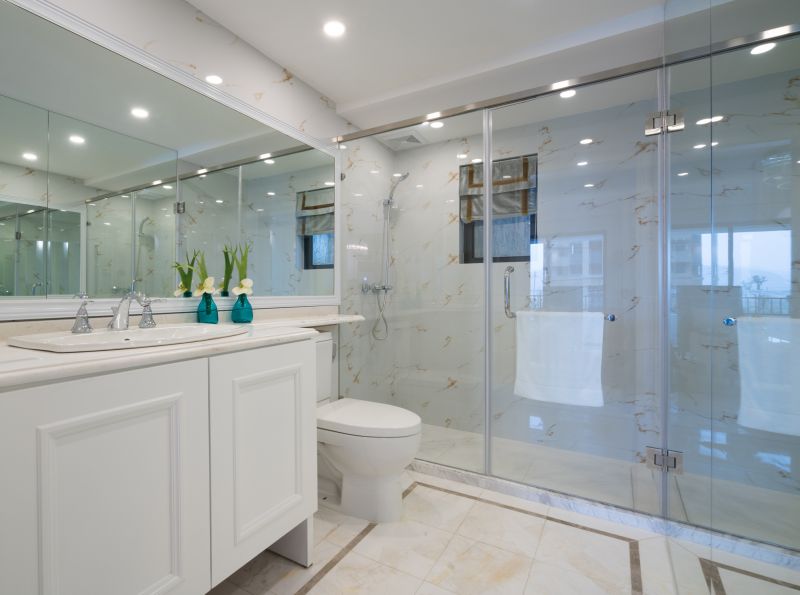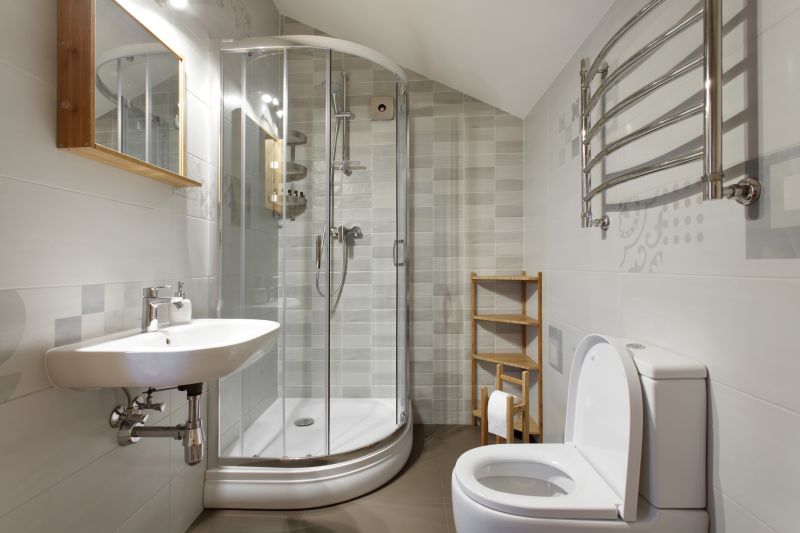Space-Saving Shower Layouts for Compact Bathrooms
Designing a small bathroom shower requires careful planning to maximize space while maintaining functionality and aesthetic appeal. Various layout options can optimize limited areas, making the shower both practical and visually appealing. Choosing the right layout involves considering the bathroom's dimensions, plumbing placement, and personal preferences for style and convenience.
Corner showers utilize space efficiently by fitting into a corner, freeing up room for other fixtures. They often feature sliding or pivot doors, which save space and provide easy access.
Walk-in showers create an open feel, making small bathrooms appear larger. Frameless glass enclosures enhance the sense of space and provide a modern look.




| Layout Type | Advantages |
|---|---|
| Corner Shower | Maximizes corner space, suitable for small bathrooms |
| Walk-In Shower | Creates an open feel, easier to access |
| Tub-Shower Combo | Provides versatility in limited space |
| L-Shaped Shower | Utilizes corner area efficiently |
| Curbless Shower | Enhances accessibility and modern appearance |
Choosing the right small bathroom shower layout involves balancing space constraints with style preferences. Corner showers are ideal for maximizing limited space, especially in bathrooms with irregular layouts. Walk-in showers offer a seamless, open appearance that can make the room feel larger. Incorporating built-in niches or shelves optimizes storage without cluttering the space. Frameless glass enclosures not only add a sleek look but also prevent visual barriers, enhancing the sense of openness.
Material choices, such as large-format tiles or light-colored surfaces, can reflect more light and create an airy atmosphere. Incorporating features like sliding doors or pivot mechanisms saves space and improves accessibility. For small bathrooms, it is crucial to consider plumbing placement and door swing directions to prevent obstruction and ensure ease of use.
Innovative design ideas include using transparent or semi-transparent glass, incorporating built-in seating, and choosing compact fixtures that do not overpower the space. These strategies enhance usability and aesthetic appeal without compromising the limited square footage available.


